

How to Use the Cruising & Traffic Support (CTS)
CTS operation conditions
The CTS speed can be set when all of the following conditions are met.
-
The brake pedal is not depressed.
-
The vehicle speed is about 0 km/h (0 mph) to 145 km/h (90 mph).
-
The Hill Descent Control is not operating.
-
The Mazda Radar Cruise Control is available.
Setting the CTS
-
Press the CTS switch to turn the system on.

When the system is on, the CTS standby indication (white)
 is displayed on the screen.
is displayed on the screen. -
Accelerate to the desired speed.
-
Set the vehicle speed by pressing the RES switch up (SET+) or down (SET-).
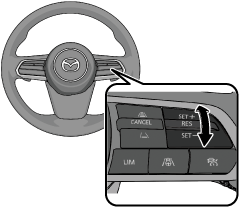
Constant speed driving starts when the vehicle speed is set. In addition, the set speed is displayed on the screen, and the CTS standby indication (white)
 changes to the CTS set indication (green)
changes to the CTS set indication (green) .
.
If a vehicle ahead is detected while traveling at a constant speed, the system switches to headway control. The vehicle ahead indication is displayed on the screen while in headway control.
Instrument cluster (Type A)
|
Driving condition |
Instrument cluster display |
Active driving display indication |
|---|---|---|
|
During travel at constant speed |
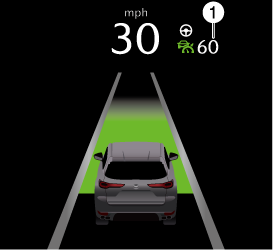 |
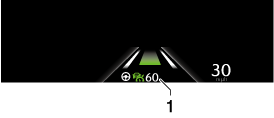 |
|
During travel under headway control |
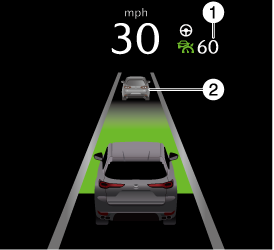 |
 |
-
Set speed
-
Vehicle ahead indication
Instrument cluster (Type B)
|
Driving condition |
Instrument cluster display |
Active driving display indication |
|
|---|---|---|---|
|
i-ACTIVSENSE display |
Other than i-ACTIVSENSE display |
||
|
During travel at constant speed |
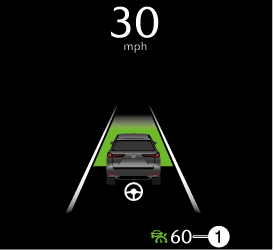 |
 |
 |
|
During travel under headway control |
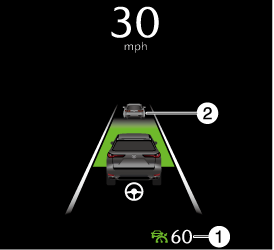 |
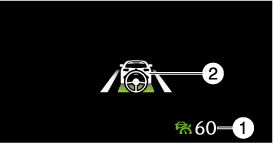 |
 |
-
Set speed
-
Vehicle ahead indication
-
If there is a structure on the road or an obstruction at a low height off the ground in front of the vehicle, the system may recognize it as a vehicle ahead.
-
Acceleration and deceleration by accelerator pedal operation takes priority while traveling at a constant speed or in headway control. When the accelerator pedal is released, the vehicle returns to driving at a constant speed or headway control at the set speed.
-
The Forward Sensing Camera (FSC) may not be able to detect target objects correctly, and the CTS may not operate normally.
Refer to Forward Sensing Camera (FSC) (Search).
-
If a vehicle ahead is traveling at an extremely low speed, the system may not detect it correctly.
-
While driving using the CTS, intended engine braking is not applied even if the selector lever is operated.
-
The brake lights turn on while the brakes are operating by the CTS control.
The steering assist function operates if all of the following conditions are met while traveling at a constant speed or in headway control.
-
When driving near the center of the lane and the white (yellow) lane lines on both sides are detected clearly, or a vehicle ahead is detected clearly in front of your vehicle and at less than about 56 km/h (35 mph).
-
The steering wheel is not turned sharply.
-
The turn signal lever is not operated.
When the steering assist function operates, the steering assist operation display changes from white to green.
Instrument cluster (Type A)
|
Driving condition |
Instrument cluster display |
Active driving display indication |
|---|---|---|
|
Steering assist within vehicle lane lines |
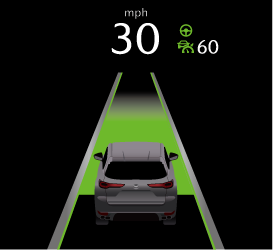 |
 |
|
Steering assist along the trajectory of the vehicle ahead |
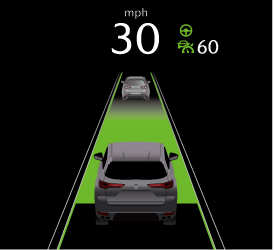 |
 |
Instrument cluster (Type B)
|
Driving condition |
Instrument cluster display |
Active driving display indication |
|
|---|---|---|---|
|
i-ACTIVSENSE display |
Except i-ACTIVSENSE display |
||
|
Steering assist within vehicle lane lines |
 |
 |
 |
|
Steering assist along the trajectory of the vehicle ahead |
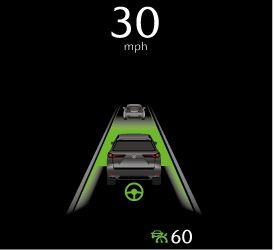 |
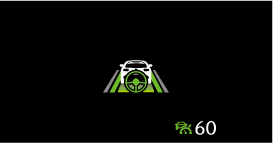 |
 |
-
The steering assist function assists the steering wheel operation so that the vehicle remains near the center of the driving lane, however, the function might not be able to keep the vehicle near the center of the driving lane when any of the following conditions is met.
-
The vehicle speed is high.
-
The vehicle is making a sharp turn.
-
The vehicle is driven on a road with steep or up and down (wavy) slopes.
-
The vehicle is driven on a road with a large lateral gradient.
-
-
If you take your hands off the steering wheel, a warning (amber) is indicated on the instrument cluster and the active driving display. Then, if you continue to leave your hands off the steering wheel, a warning (red) is indicated on the instrument cluster and the active driving display and a warning sound is activated.
Instrument cluster (Type A)
Warning (amber)

Warning (red)
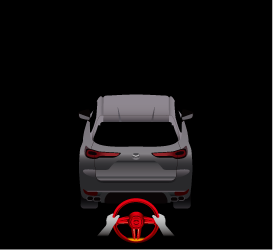
Instrument cluster (Type B)
Warning (amber)
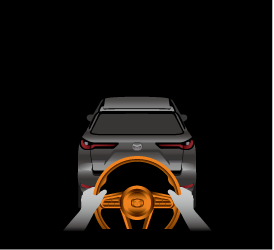
Warning (red)
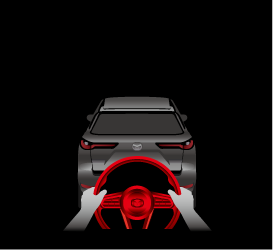
Active driving display
Warning (amber)

Warning (red)

If the vehicle ahead stops during headway control, your vehicle in headway control also stops. While the vehicle is stopped, the CTS indicator light  in the Instrument cluster turns on.
in the Instrument cluster turns on.
When the vehicle ahead accelerates from a stop and one of the following operations is performed, your vehicle starts driving.
-
Press the RES switch.
-
Depress the accelerator pedal.
If you do not start driving the vehicle after the vehicle ahead has resumed driving, the system urges the driver to resume driving.
-
If the vehicle ahead resumes driving within 3 seconds after the vehicle was stopped by the system, your vehicle also resumes driving automatically.
-
If the vehicle is stopped by the system continuously for 10 minutes or longer, the parking brake is applied automatically. At this time, the CTS is canceled.
-
Even if the CTS is canceled while the vehicle is stopped, the vehicle is held in its stopped position.
Refer to AUTOHOLD (Search).
-
If the CTS is canceled while the vehicle is stopped and there is no vehicle ahead, you cannot resume driving the vehicle using the RES switch. Depress the accelerator pedal and start driving the vehicle.
-
If the i-stop operation conditions are met while the vehicle is stopped, the i-stop function operates without depressing the brake pedal. The engine restarts automatically when you start driving the vehicle.
Refer to i-stop (Search).
Changing the set vehicle speed
Changing the set vehicle speed using the RES switch
Press the RES switch up (SET+) or down (SET-) to the desired speed.
-
Press and release immediately: 1 km/h (1 mph)
-
Press and hold: 10 km/h (5 mph)
Changing the set vehicle speed using the accelerator pedal
Depress the accelerator pedal until the vehicle speed reaches the desired speed, then press the RES switch up (SET+) or down (SET-).
Reading the set vehicle speed from the speed limit sign using the RES switch
Press the RES switch when the speed limit sign set indication  turns on.
turns on.
-
The function which recognizes speed limit signs has limitations. Always check the set vehicle speed that was read.
-
Set the speedometer display unit to the same unit as the speed limit sign. Differing units will capture speeds not intended by the driver.
-
The Speed Limit Assist operates only when the navigation system's SD card is inserted.
-
The Speed Limit Assist uses the Traffic Sign Recognition system (TSR).
Refer to Traffic Sign Recognition System (TSR) (Search).
-
The Speed Limit Assist cannot read speeds of less than 30 km/h (19 mph).
-
Set vehicle speeds read from speed limit signs can be adjusted.
Refer to the Settings section in the Mazda Connect Owner's Manual.
-
The Speed Limit Assist can be turned off.
Refer to the Settings section in the Mazda Connect Owner's Manual.
Setting the distance-between-vehicles during headway control
-
Press the CANCEL switch up (longer distance) or down (shorter distance).
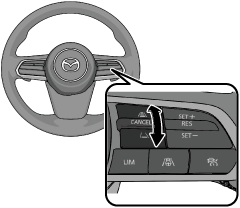
CTS is not operating (white)
Instrument cluster (Type A)
|
Distance-between-vehicles guideline (at 80 km/h (50 mph) vehicle speed) |
Instrument cluster display |
Active driving display indication |
|---|---|---|
|
Long (about 50 m (164 ft)) |
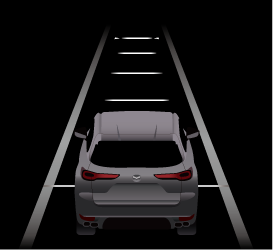 |
 |
|
Medium (about 40 m (131 ft)) |
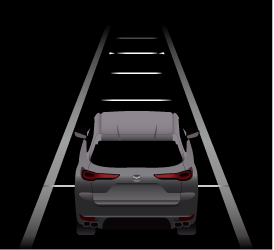 |
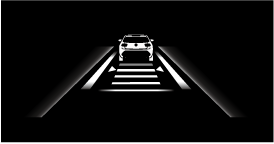 |
|
Short (about 30 m (98 ft)) |
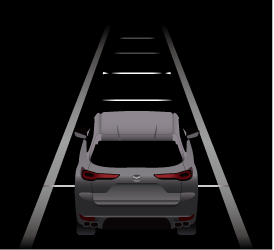 |
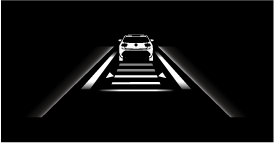 |
|
Extremely short (about 25 m (82 ft)) |
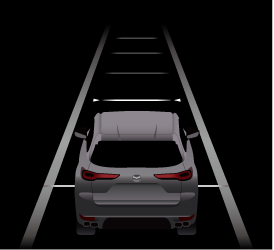 |
 |
Instrument cluster (Type B)
|
Distance-between-vehicles guideline (at 80 km/h (50 mph) vehicle speed) |
Instrument cluster display |
Active driving display indication |
|---|---|---|
|
Long (about 50 m (164 ft)) |
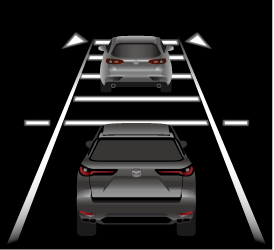 |
 |
|
Medium (about 40 m (131 ft)) |
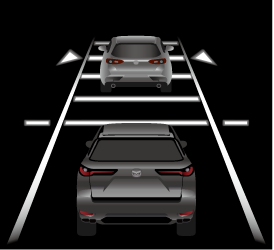 |
 |
|
Short (about 30 m (98 ft)) |
 |
 |
|
Extremely short (about 25 m (82 ft)) |
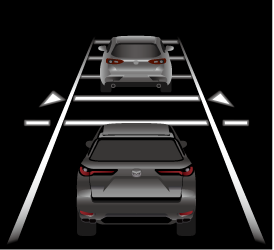 |
 |
CTS is operating (green)
Instrument cluster (Type A)
|
Distance-between-vehicles guideline (at 80 km/h (50 mph) vehicle speed) |
Instrument cluster display |
Active driving display indication |
|---|---|---|
|
Long (about 50 m (164 ft)) |
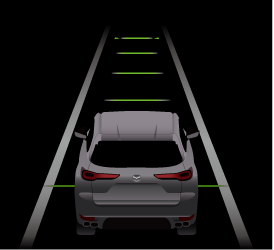 |
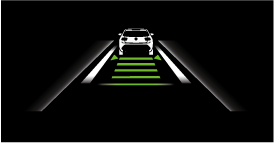 |
|
Medium (about 40 m (131 ft)) |
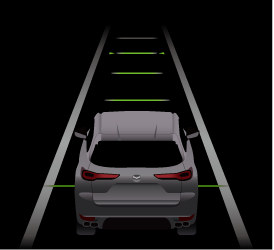 |
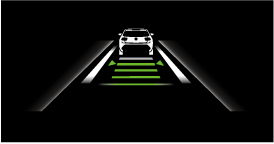 |
|
Short (about 30 m (98 ft)) |
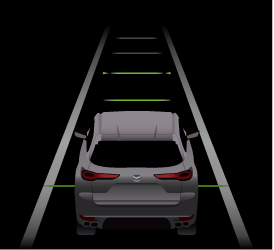 |
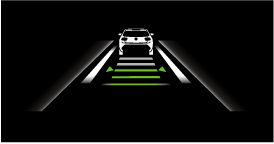 |
|
Extremely short (about 25 m (82 ft)) |
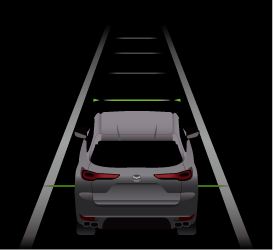 |
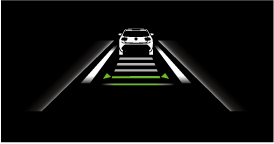 |
Instrument cluster (Type B)
|
Distance-between-vehicles guideline (at 80 km/h (50 mph) vehicle speed) |
Instrument cluster display |
Active driving display indication |
|---|---|---|
|
Long (about 50 m (164 ft)) |
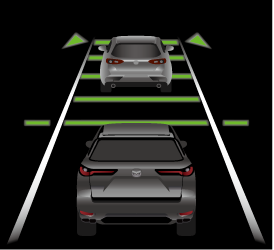 |
 |
|
Medium (about 40 m (131 ft)) |
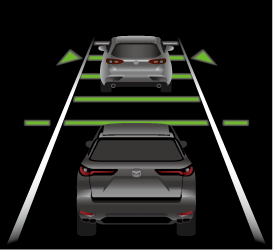 |
 |
|
Short (about 30 m (98 ft)) |
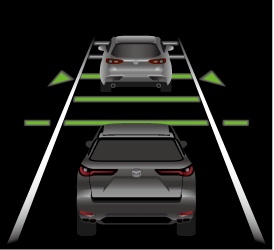 |
 |
|
Extremely short (about 25 m (82 ft)) |
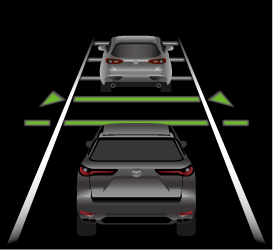 |
 |
-
The distance-between-vehicles can be set to 4 levels: Long, medium, short, and extremely short distance.
-
The distance-between-vehicles differs depending on the vehicle speed, and the slower the vehicle speed, the shorter the distance.
Close proximity warning
If your vehicle approaches a vehicle ahead while in headway control, a warning sound and a display cautions you.
Instrument cluster (Type A)

-
“Depress Brake Pedal”
Instrument cluster (Type B)
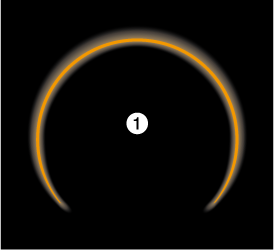
-
“Depress Brake Pedal”
-
The close proximity warning may not be activated in the following cases.
-
The vehicle is driven at the same speed as the vehicle ahead.
-
Directly after the CTS is set.
-
Immediately after the accelerator pedal is released.
-
Another vehicle cuts into the driving lane.
-
-
Do not use the CTS system under conditions in which the close proximity warnings are frequently activated.
Steering assist limit warning
If the steering assist function cannot keep the vehicle within the lane lines, a screen display and a warning sound urge you to operate the steering wheel.
Instrument cluster (Type A)
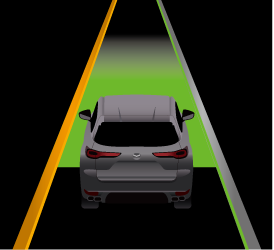
Instrument cluster (Type B)
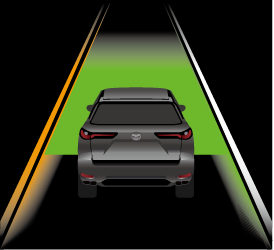
Active driving display

The CTS is temporarily canceled
Constant speed/Headway control function
If any of the following conditions is met, the constant speed/headway control function is temporarily canceled.
-
The brake pedal is depressed.
-
The CANCEL switch is pressed one time.
-
The DSC has operated.
-
The Smart Brake Support (SBS) has operated.
-
The front radar sensors cannot detect target objects.
-
The parking brake is applied.
-
Any door is opened.
-
The driver’s seat belt is unfastened.
-
The frequency of the braking operation by the CTS is high.
If the constant speed/headway control function is temporarily canceled, it will resume operation at the previously set speed by pressing the RES switch.
Steering assist function
If any of the following conditions is met, the steering assist function is temporarily canceled. The steering assist function is automatically restored when its operation conditions are met.
-
The constant speed/headway control function is canceled.
-
White (yellow) lane lines cannot be detected or a vehicle ahead cannot be recognized.
-
The turn signal lever is operated.
-
The steering wheel is operated abruptly.
-
Hands are off the steering wheel.
-
The vehicle is making a sharp curve.
-
The vehicle crosses a lane line.
-
The width of the vehicle lane is narrow or wide.
The notification method when the steering assist function is canceled can be changed.
Refer to the Settings section in the Mazda Connect Owner's Manual.
Turning off the CTS
Press the CTS switch.
The CTS set indication (green)  /CTS standby indication (white)
/CTS standby indication (white)  turns off, and the CTS turns off.
turns off, and the CTS turns off.


